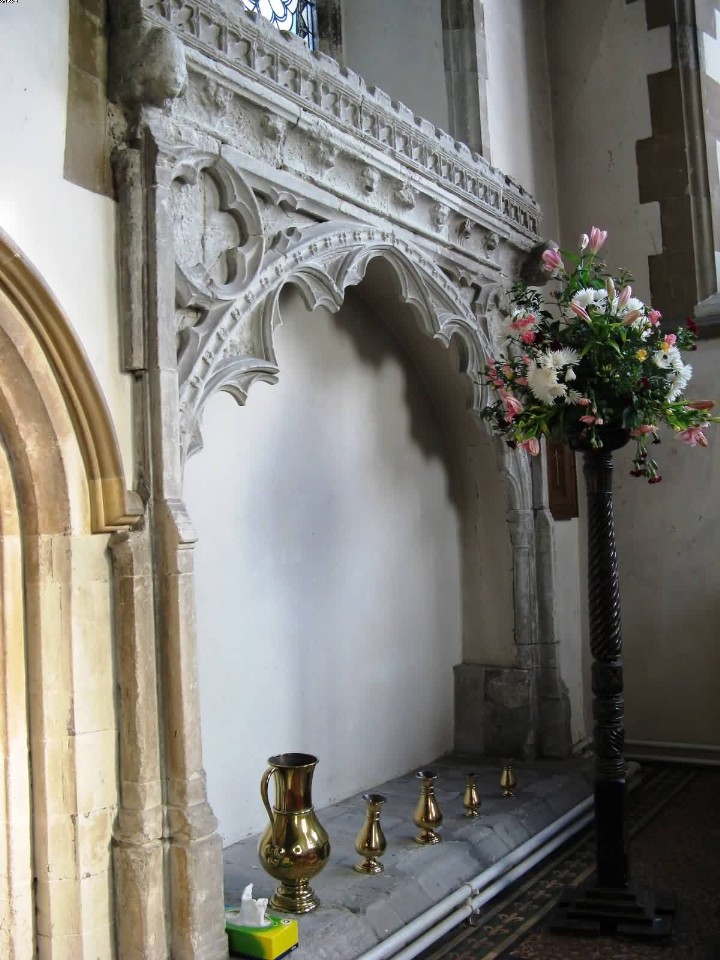Easter Sepulchre

As you look toward the Alter you may notice an ‘empty tomb-like’ under a handsome five-foiled arch in the northeast corner of the Sanctuary: the Easter Sepulture.
The purpose of an Easter Sepulchre was the ritual ‘burial’ of Christ, a most solemn observance in medieval times, and required a ‘tomb’. At the end of the liturgies of Good Friday (including the strange Creeping to and Adoration of the Cross), the Priest, in bare feet and clad in his surplice, carried a Pyx (a small receptacle to carry the consecrated host) containing the third Host (consecrated on Maundy Thursday) and the Cross, both wrapped in linen, to the north side of the chancel, where a temporary ‘sepulchre’ (usually of timber, draped with a pall) was made ready, and laid them within. The ‘sepulchre’ was censed, and numerous candles glowed before it, a continuous watch being kept to protect both the Host and the Pyx (which was usually of high quality). Early on Easter Morning, the church was illuminated with candles; clergy processed to the ‘sepulchre’, which was censed; the Host was removed to the Pyx above the high-altar; and the Cross was raised from the ‘sepulchre’ and carried in procession round the church while bells chimed and the Resurrection was celebrated. The Cross was then set on an altar on the north side of the church, where it was again venerated. The now empty ‘sepulchre’ remained an object of devotion (being censed, having illuminated candles in front of it, etc.) for the days after Holy Week.
The design of the stone tracery above the tomb is worth noting although there is nothing included here symbolic of the Resurrection — which is usually a feature of an Easter Sepulchre. There is no firm evidence of the date of construction of the Sepulchre!
To the side of the Easter Sepulchre is a blocked up doorway which once led in to a Chantry Chapel, traces of which still exist in the form of a piscina and holy water stoup which are now on the external wall.
